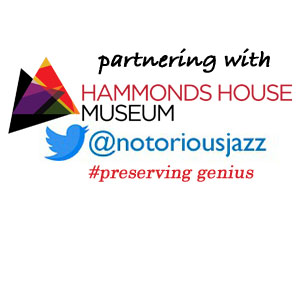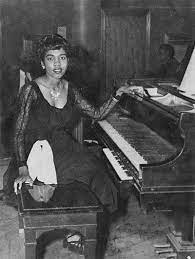
Three Wishes
While having girl talk between Nica and Terry Pollard she asked her what her three wishes would be if they could be granted:
- “A baby girl.”
- “Guaranteed good health.”
- “An un~segregated world.”
*Excerpt from Three Wishes: An Intimate Look at Jazz Greats ~ Compiled and Photographed by Pannonica de Koenigswarter
More Posts: baroness,history,instrumental,jazz,music,pannonica,piano,three,wishes
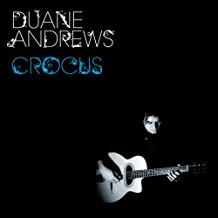
Daily Dose Of Jazz…
Duane Andrews was born November 30, 1972 in Carbonear, Newfoundland and Labrador and grew up exposed to the island’s mélange of cultural influences and his development as a guitarist reflects that. After graduating from the Jazz Studies program at St. Francis Xavier University with honours, he spent several years studying contemporary music composition at the Conservatoire International de Paris and at the Conservatoire National de Region in Marseille, France.
He combines traditional Newfoundland folk music with jazz similar to the way that guitarist Django Reinhardt infused jazz with Manouche influences. He is a composer for film and television, and has recorded thirteen albums as he continues to compose and explore music.
More Posts: bandleader,composer,guitar,history,instrumental,jazz,music
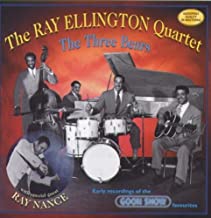
Daily Dose Of Jazz…
George Coleridge Emerson Goode was born on November 29, 1914 in Kingston, Jamaica. His father was a choirmaster and organist and his mother sang in the choir. Moving to Britain in 1934, the 19-year-old student at the Royal Technical College in Glasgow, Scotland and then went on to read for a degree in engineering at Glasgow University. Already proficient as an amateur classical violinist he turned to jazz and took up the bass after hearing the music of Count Basie, Duke Ellington, Billie Holiday and Louis Jordan and decided to embark upon a musical career.
His primary early influences as a bassist were Walter Page, Slam Stewart and Jimmy Blanton. In London during World War II, Coleridge worked with Johnny Claes, Eric Winstone, Lauderic Caton, Dick Katz, became a founder member of the Ray Ellington Quartet and recorded with Django Reinhardt in 1946, alongside Stephane Grappelli. He went on to play with Tito Burns’ sextet and led his own group, before being invited to join Joe Harriott’s new band in 1958.
By 1967 he was recording with Chris McGregor, Dudu Pukwana, Ronnie Beer, and Laurie Allan on Gwigwi Mrwebi’s Mbaqanga Songs. Through the decade and into the 1970s, Goode worked extensively with pianist/composer Michael Garrick, while performing in the house band at Laurie Morgan’s Sunday jam session into his 90s.
In 2002, he published his autobiography Bass Lines: A Life in Jazz, which chronicled the birth of free form jazz in Britain. He was honoured with the Services to Jazz Award at the Parliamentary Jazz Awards, and at the age of 100, double bassist Coleridge Goode passed away on October 2, 2015.
More Posts: bass,history,instrumental,jazz,music
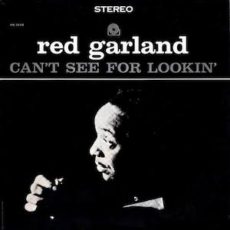
Requisites
Can’t See For Lookin’ ~ Red Garland | By Eddie Carter
I was in the mood for some nice soothing music to enjoy after dinner a few nights ago when I came across this morning’s choice from the library by Red Garland. Can’t See For Lookin’ (Prestige PRLP 7276/PRST 7276) is his twelfth album and was recorded in 1958 but not released until 1963. William “Red” Garland was born in Dallas, Texas, and began playing the clarinet and alto sax before taking up the piano. He became famous in The Miles Davis Quintet from 1955 to 1958 and was well versed in the styles of Bebop, Hard-Bop, and straight-ahead jazz. After leaving Miles, he formed a trio and has recorded albums with Arnett Cobb, John Coltrane, Curtis Fuller, Jackie McLean, Charlie Parker, Art Pepper, Sonny Rollins, and Phil Woods. Here, he’s joined by Paul Chambers on bass and Art Taylor on drums. My copy used in this report is the 1972 US Stereo reissue (Prestige PRT-7276) by Fantasy Records.
Side One starts with a pretty song from the forties, I Can’t See For Lookin’ by Nadine Robinson and Dock Stanford. The trio begins an enchanting collective melody then Red glides into the first solo with a gracious amount of warmth and elegant simplicity. Paul walks through the second statement with a dreamy, rich tone revealing some intimate thoughts ahead of the trio’s delightful ending. Soon by George and Ira Gershwin began as a show tune from the musical, Strike Up The Band (1927). The ensemble gets things underway with a lively theme that’s passionate, enthusiastic, and extremely confident. Garland gives a stunning account on the opening solo with an energy that tweaks some new insights out of this old warhorse. Chambers makes his mark on the second reading with a showcase of incisively nostalgic ideas, and Taylor becomes a friendly sparring partner to the pianist on the closing statement.
Side Two opens with Blackout, a tune from the pen of Avery Parrish and Sammy Lowe beginning with an easy, caressing style by the ensemble on the melody. Red steps up first, establishing a nice momentum with a gorgeous opening statement. Paul approaches the next interpretation with great sensitivity and delicacy. Red returns to share a polite conversation with Art on the closing reading into a tender exit. Castle Rock by Al Sears brings the trio back to a brisk beat on the melody in unison. Garland leads off the opening statement with a light and nimble performance, then Chambers cooks up a tasty treat of cool jazz on the second solo. Taylor enters the spotlight last with Garland in a brief exchange into the closing chorus and happy ending.
Can’t See For Lookin’ was supervised by Prestige founder Bob Weinstock and Rudy Van Gelder was the man behind the dials. Both men are at the top of their game with a tremendous soundstage and incredible definition of each instrument. The piano has an amazing sound, and the bass and drums are perfectly balanced as if we’re in the studio while the musicians are recording. Red Garland recorded forty-six albums as a leader and was always good regardless of the setting or bandmates he appeared with. His career lasted over forty years and he continued recording until he suffered a heart attack, passing away on April 23, 1984, at age sixty. If you’re a Hard-Bop fan, enjoy Red Garland or jazz piano, I submit for your consideration, Can’t See For Lookin’. It’s thirty-five minutes of great music that you can file under “T” for terrific and perfect to enjoy while relaxing!
~ Soon – Source: Wikipedia.org © 2021 by Edward Thomas Carter
More Posts: <!-- wp:paragraph --> <p><strong>choice,classic,collectible,collector,history,instrumental,jazz,music,piano
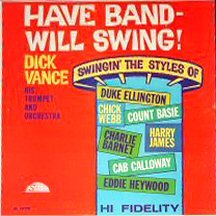
Daily Dose Of Jazz…
Dick Vance was born on November 28, 1915 in Mayfield, Kentucky, and raised in Cleveland, Ohio. He learned violin before concentrating on trumpet and by 1932 was playing with J. Frank Terry before joining Lil Armstrong’s band in 1934.
He moved to New York City and played with Willie Bryant, Kaiser Marshall, and Fletcher Henderson between 1936 to 1938. In Henderson’s band he was lead trumpeter and occasionally sang. By 1939 he joined Chick Webb’s orchestra, remaining in the group when Ella Fitzgerald took over leadership. His next move had him becoming the staff arranger for Glen Grey’s band and, in 1942, joined the Lucky Millinder Orchestra.
From 1944–45 he worked with Charlie Barnet, Don Redman, Eddie Heywood and Ben Webster. From 1944 to 1947 he studied at Juilliard, and moonlighted as a pit orchestra musician and an arranger for Harry James, Cab Calloway, Earl Hines and Duke Ellington. During this time Dick played on notable Broadway productions including Pal Joey, Beggar’s Holiday, and in the off-stage band for Streetcar Named Desire.
In 1950, Vance reunited with Fletcher Henderson, playing in his New York sextet. 1951 to 1952 saw him as a member of Duke Ellington’s trumpet section where he arranged most of the items for the album Ellington ‘55. In 1958 he co-composed Jazz Festival Suite with Ellington for performance at the Newport Jazz Festival. He led Sonny Stitt’s trumpet section on the 1962 album Sonny Stitt & The Top Brass. He toured abroad with his own band in 1969, which later appeared in the film L’aventure du jazz.
He toured with Redman in 1953 and was a regular at the Savoy Ballroom throughout the 1950s. He released two albums in the 1960s and toured with Eddie Barefield in 1969. He appears briefly in episode 9 of the music documentary series All You Need Is Love: The Story of Popular Music. In 1979, he composed for the documentary film No Maps On My Taps, starring Lionel Hampton and Howard Sims.
Trumpeter, vocalist, composer and arranger Dick Vance passed away on July 31, 1985 in New York City at the age of 69.
More Posts: arranger,bandleader,composer,history,instrumental,jazz,music,trumpet,vocal



